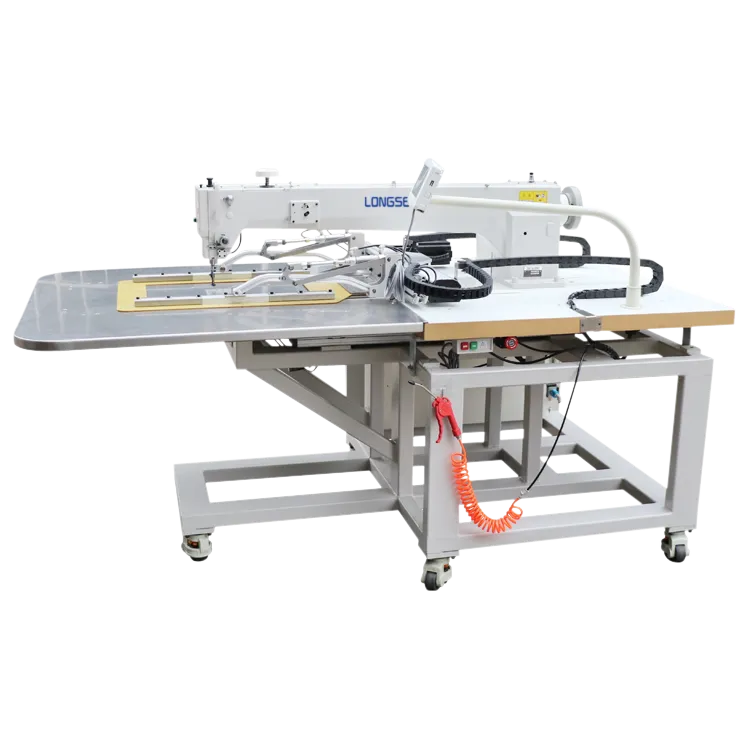lockstitch seam
Understanding the Lockstitch Seam An Essential Stitch in Sewing
Sewing is an art that combines creativity, precision, and technical skill. Among the various techniques in sewing, the lockstitch seam stands out as one of the most fundamental stitches. It forms the basis for both hand and machine sewing, creating a durable and versatile seam suitable for numerous fabrics and applications.
The lockstitch seam is characterized by its unique construction, where two threads are interlocked to create a strong, secure stitch. This is achieved using a sewing machine, which has a needle that passes through the fabric, carrying the upper thread with it. Once the needle has pierced the fabric and comes back up, a bobbin (located beneath the fabric) feeds the lower thread, which wraps around the upper thread to create a knot. This interlocking mechanism is what gives the lockstitch its name, as it “locks” the threads together.
One of the most significant advantages of the lockstitch is its strength. Because the threads are intertwined, this type of seam can withstand tension and stress, making it ideal for constructing garments, upholstery, and other items that require durability. Additionally, the lockstitch creates a clean and professional finish, which is particularly important in fashion and garment manufacturing.
Lockstitch seams are commonly used in a variety of sewing applications. In garment construction, they are employed for side seams, hems, and sleeves. In home decor, lockstitch seams hold together pillow covers, curtains, and bedding. Furthermore, it's often the preferred seam for quilting projects, as it allows for precise stitching across multiple layers of fabric.
lockstitch seam

One noteworthy aspect of the lockstitch seam is its flexibility in terms of fabrics. It can be used on lightweight materials like silk and chiffon, as well as heavier fabrics like denim and canvas. By adjusting the tensions and the type of needle used, sewists can achieve optimal results across different fabric types, making the lockstitch an invaluable skill for any sewing enthusiast.
However, it’s important to note that lockstitch seams can also have some downsides. One limitation is that they may not be suitable for fabrics that require significant stretch, such as knits or elastic materials. In such cases, other types of stitches, like the zigzag stitch, may be preferred as they allow for more flexibility.
To achieve the best results with lockstitch seams, it’s crucial for sewists to pay attention to their sewing machine settings, including the stitch length and tension. Proper needle selection is also key; different fabrics may require different needle types to prevent issues like thread breakage or skipped stitches.
In conclusion, the lockstitch seam is a foundational stitch in the world of sewing, offering a balance of strength, versatility, and a polished finish. Whether you are a beginner learning the ropes or an experienced sewist crafting intricate projects, mastering the lockstitch is an essential skill that enhances your sewing repertoire. As trends and techniques evolve in the sewing community, the lockstitch seam remains a reliable and classic choice that has stood the test of time.
-
Industrial Cylinder Arm Sewing Machine: Revolutionizing Heavy-Duty SewingNewsJul.28,2025
-
Cylinder Arm Sewing Machine: Perfect for Special Sewing ApplicationsNewsJul.28,2025
-
Cylinder Bed Sewing Machine: Essential for Sewing Complex MaterialsNewsJul.28,2025
-
Heavy Duty Sewing Machine: The Essential Tool for Industrial ApplicationsNewsJul.28,2025
-
Computerized Pattern Sewing Machine: Revolutionizing Precision StitchingNewsJul.28,2025
-
Heavy Duty Industrial Sewing Machine: Power Meets PrecisionNewsJul.28,2025
-
Leather Sewing Machine: The Industrial Standard for Tough MaterialsNewsJul.18,2025





























